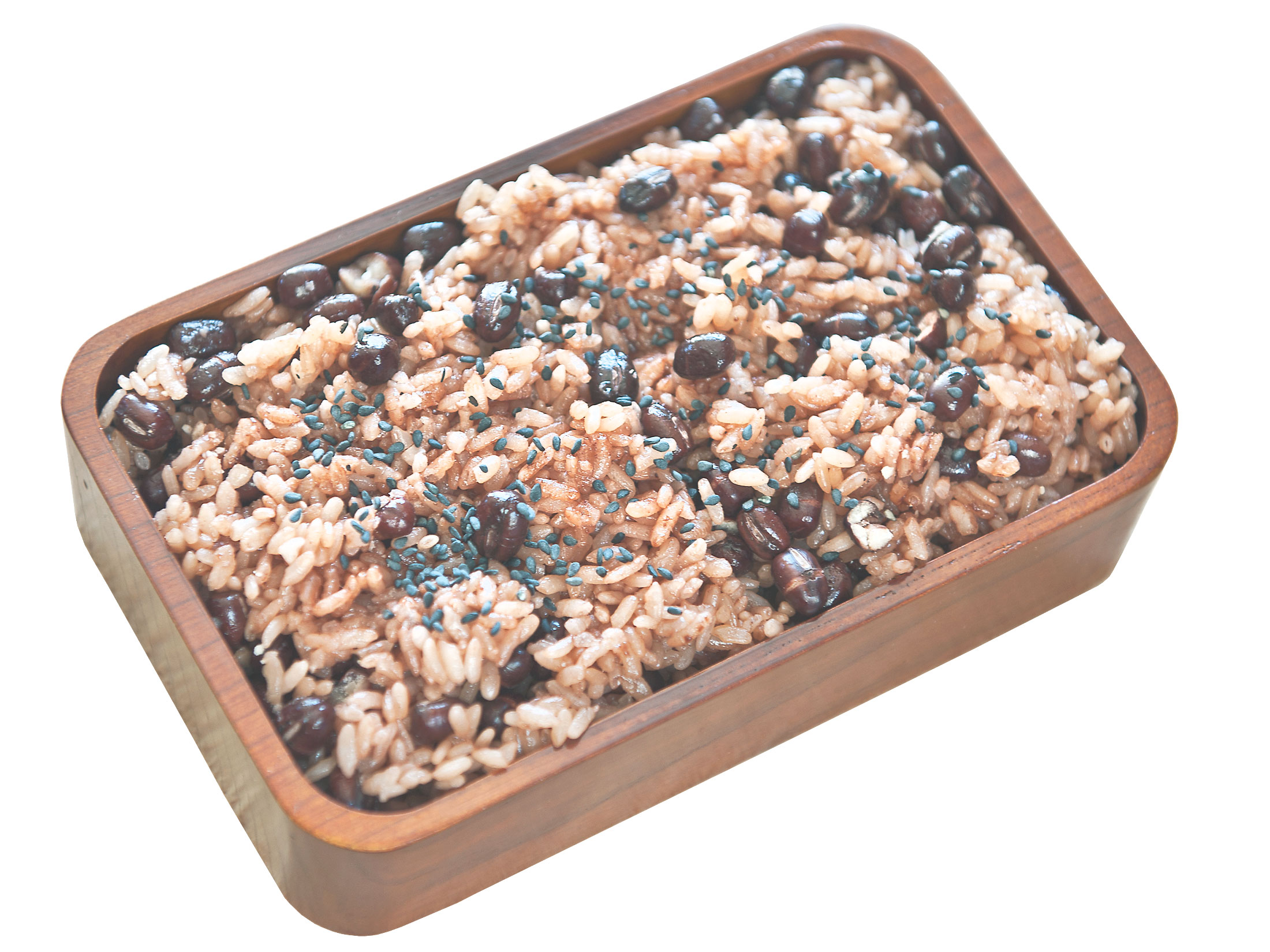The quintessential festive dish in Japan is sekihan (literally, "red rice"), which is served on special days throughout the year. The dish is made with short-grain or sweet mochi (sticky or glutinous) rice and red adzuki beans — the cooking liquid from the beans is what gives the dish its reddish hue.
Historically the color red was thought to have magical powers in Japan; it heralded good fortune and warded off evil. But these days sekihan is mostly eaten for good luck.
The tradition of serving sekihan on festive occasions has its roots in old Shinto rituals, when naturally red rice (probably closely related to what's known today as Camargue red rice) was offered to the gods — with humans partaking of the leftovers. As time passed, short and medium grain rice varieties became more popular in Japan and long-grain red rice was no longer widely cultivated. By the late Muromachi Period (1333-1578) it had virtually disappeared, although it's still grown in some regions where naturally red rice continues to be used in Shinto rituals. The custom of cooking adzuki beans with rice in a kayu (porridge) began in the Imperial court in the mid-Heian Period (794-1185), but as with many Japanese traditions serving sekihan on auspicious occasions was established during the Edo Period (1603-1868).

















With your current subscription plan you can comment on stories. However, before writing your first comment, please create a display name in the Profile section of your subscriber account page.